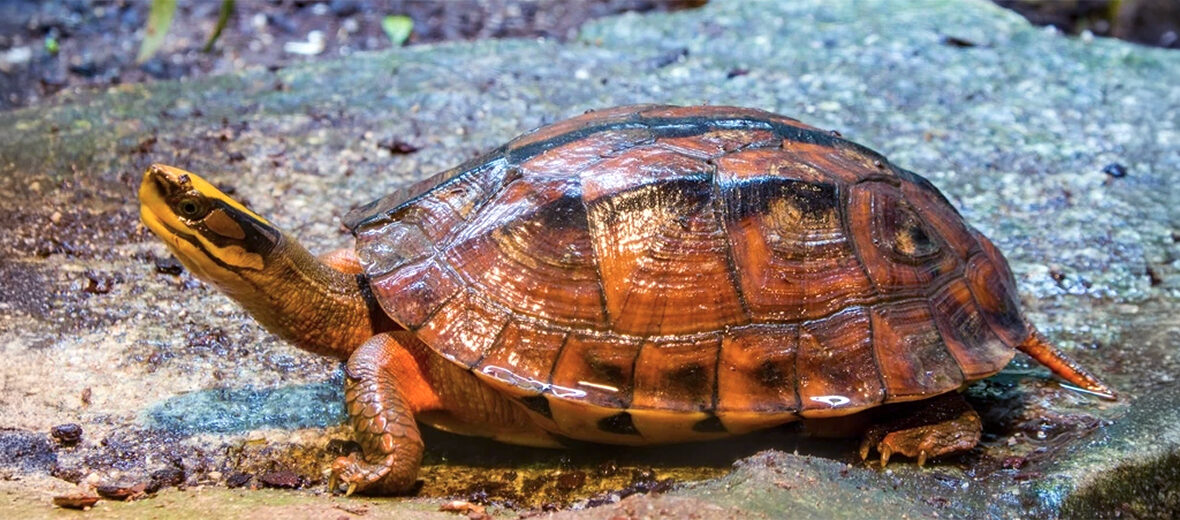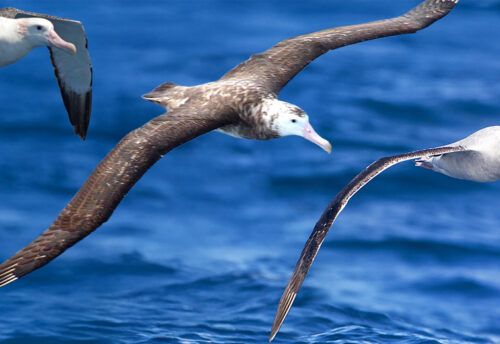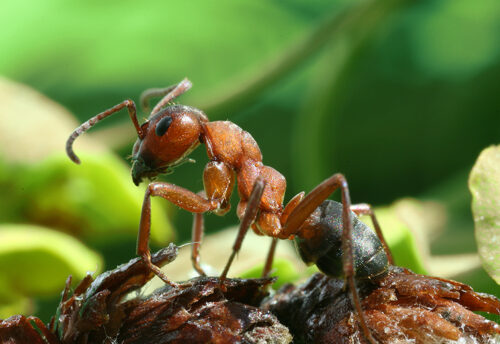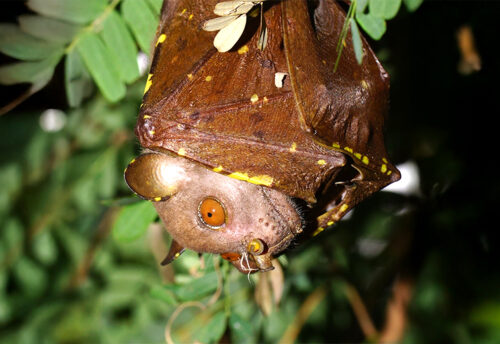
The golden coin turtle, aka Chinese three-banded box turtle or the Chinese three-striped box turtle, hails from Hainan. These turtles face the threats of habitat loss and destruction at the hands of residential and commercial developments, both marine and freshwater aquaculture; hunting; trapping; over-harvesting; and invasive species, that can bring about disease and predation. The IUCN lists these turtles as Critically Endangered (1-step away from extinct). Their population trend is also decreasing.
First the Stats…
Scientific name: Cuora trifasciata
Weight: Up to .88 lb.
Length: Up to 10 inches
Lifespan: Up to 60 years
Now on to the Facts!
1.) There are 2 recognized subspecies: Cuora trifasciata luteocephala and Cuora trifasciata trifasciata.
2.) They have been extirpated from the mainland Guangdong, Guangxi, and Fujian provinces, as well as from Hong Kong.
3.) These turtles prey on fish, frogs, crabs, snails, insects, and carrion (dead animals).
4.) Golden coin turtles very easily hybridize with their relatives in captivity as well as in the wild, and hybrids may also be fertile.
5.) A few of these hybrids have been described as new species, like the Fujian pond turtle (a hybrid between males of this species and females of the Asian yellow pond turtle). Also, these turtles are suspected to be parents of 2 other supposed species, the Chinese false-eyed turtle and Philippen’s striped turtle.
But wait, there’s more on the golden coin turtle!
6.) They are also utilized in traditional medicine as the key ingredient for the Chinese medicinal dessert guīlínggāo (龜苓膏). As a result they are under threat due to unsustainable hunting.
7.) Researchers have estimated that the turtle farmers participating in a survey had a total bale of 115,900 turtles of this species. They reported selling 20,600 of these turtles per year, with the estimated value of almost $37 million USD.
Did you know…?
These critters are 1 of the most endangered turtle species in the world, according to a 2003 assessment by the IUCN. They are listed among Turtle Conservation Coalition’s 25 most endangered freshwater turtles and tortoises.
8.) Farm-raised golden coin turtles are worth nearly $1,800 each, making them among the most expensive species of turtle sold.
9.) Due to incubation temperatures at farms located in warm lowlands, these farms have only been able to produce females. Thus, this increases the value of wild-caught males to $20,000 USD each!
10.) Many farmed golden coin turtles are hybrids, which can potentially escape and establish wild populations, thus causing genetic pollution. Genetic pollution is where the original species is ultimately replaced by hybrids.
But wait, there’s still more on the golden coin turtle!
11.) Females lay up to 6 eggs per clutch, and produce up to 12 clutches per year.
12.) Eggs take up to 85 days to incubate.
13.) These turtles begin breeding at around 8 years of age.
14.) They were first described by Thomas Bell in 1825.
Now a Short Golden Coin Turtle Video!
Be sure to share & comment below! Also, check out the Critter Science YouTube channel. Videos added regularly!

Want to suggest a critter for me to write about? Let me know here.
Some source material acquired from: Wikipedia & IUCN



